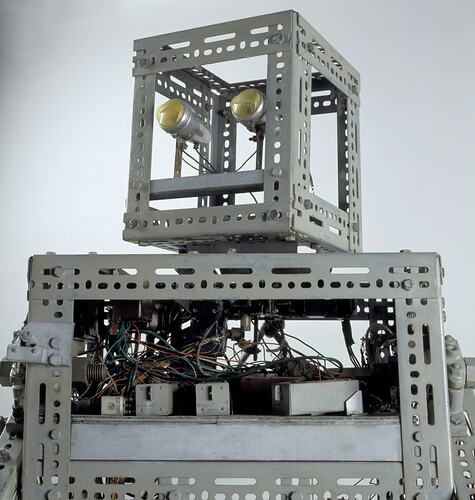Why is there a question mark when we call Robbie a Robot?
Robbie is not automatic like a robot. A robot, once programmed, can operate autonomously... well, until its energy supply runs out or it is told to stop! Robbie is, if anything, an ingenious set of adjustable spanners. It can only do its thing if it is operated by a human using the control panel.
Robbie's history and construction
Robbie was built in the 1950s by Bernard Smith, a teacher, to demonstrate the possibilities of mechanical devices to his students. Robbie was constructed in vaguely human form. This reflected the way people imagined the future might be - a world with mechanical servants to carry out their every whim. In the 1950s, computers were described as mechanical brains and were often credited with human feelings.
Robbie originally ran off two 12 volt car batteries, but for convenience we now run him from a 240/24v power supply. Operated from a remote control panel, Robbie could move backwards, sideways and forwards, move his arms and hands and handle objects.
Robbie's creator was Bernard Smith (1925-1993). Bernard was a science teacher at Hawthorn Central School in Melbourne. He built Robbie from scratch using available materials. You can see some of these materials if you look closely. In particular, look for the bicycle brake callipers that make up Robbie's hands, and the Meccano in its right arm.
Due to the importance of maintaining the robot in his original condition this item has been conserved rather than restored to full function. This means that all the original parts are still present. Robbie is built from military disposal parts of which there was a plentiful supply after World War Two (1939-45). The wheels are tail wheels from Mustang fighter aeroplanes. The 24 volt motors (13 of them) would have served various duties in aeroplanes such as operating flaps, bomb bay doors etc. Although the motors are fairly small they exert tremendous pressure due to their gearing (several thousand to one).
More Information
-
Keywords
-
Authors
-
Article types


